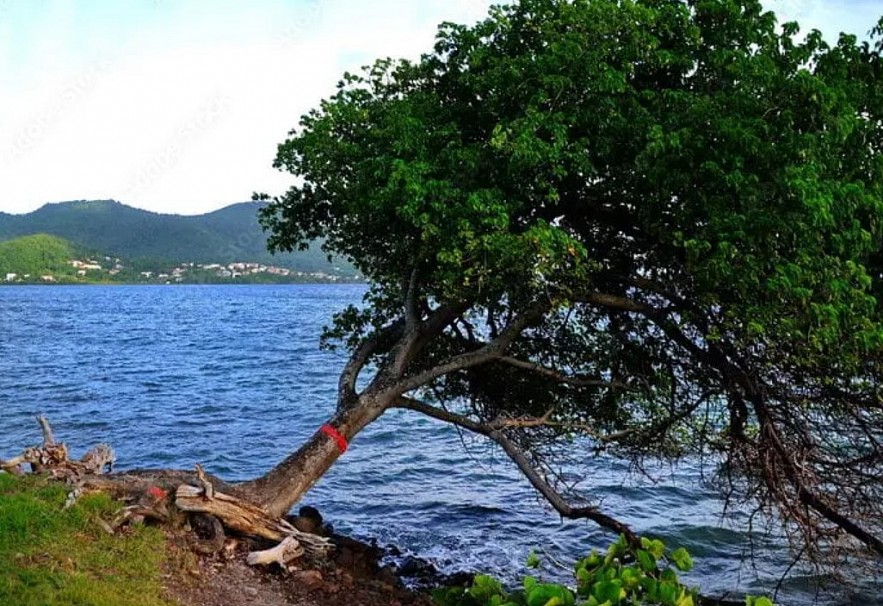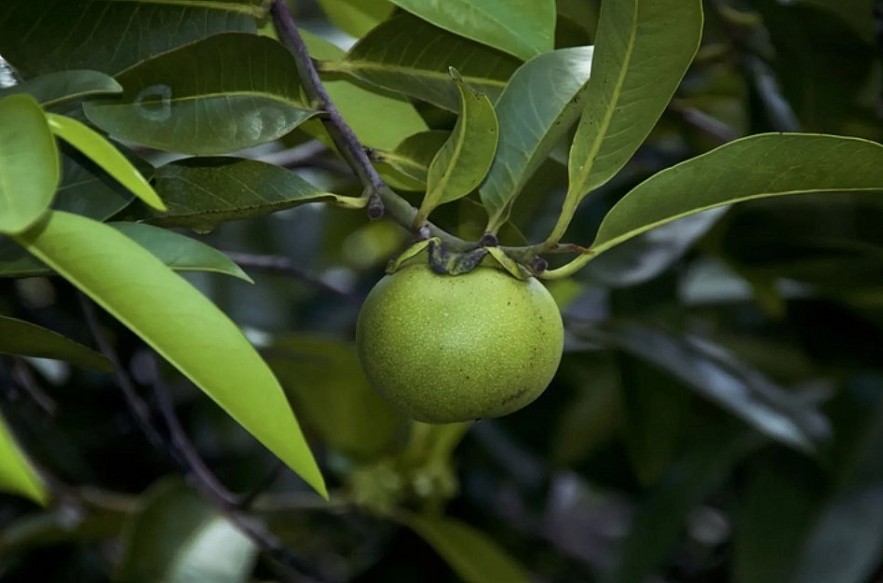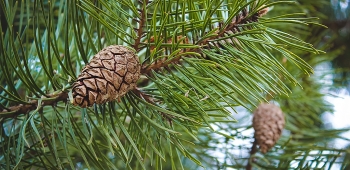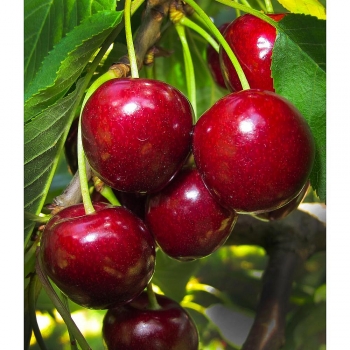Manchineel - The Most Notorious Poisonous Tree in the World
Trees are an essential component of the Earth's ecosystem. Trees have met countless human needs, including providing food, shade, and oxygen, as well as being used to build houses.
Humans no longer spend as much time in forests as they once did, but trees remain an important part of modern cities. Although trees are very popular among humans, you must exercise caution when handling them because not all plants, such as the manchineel tree, are completely safe. So, why is this plant the most notoriously dangerous in the world? Let's find out.
 |
| Manchineel trees are often marked with red paint as a warning of danger |
The manchineel tree grows on the sandy beaches of America
Manchineel's full name is Hippomane mancinella, and it can grow to be up to 12m tall with a 60cm thick trunk. It has many elliptical-shaped branches with green-yellow leaves and a distinct scent.
The tree's fruit is green and turns yellow-brown when ripe. The fruit grows in pairs or singly on the branches. Because the fruit and foliage resemble those of an apple tree, manchineel is known as "manzanilla" in Spanish, which means "little apple."
Manchineel is found in sandy, mangrove soils throughout southern Florida, the Caribbean, Central America, and northern South America. Locals have placed warning signs urging tourists to keep their distance from this plant.
Walking along the coast, one will notice Manchineel trees marked with a circle of red paint as a warning to keep a safe distance.
The manchineel tree is notorious for its extremely poisonous properties
 |
| Eating the fruit of this tree causes many painful consequences |
On a hot day along the coast, the shade of the manchineel tree can be very appealing. When ripe, the fruit on the branch is stunningly beautiful and succulent. However, enjoying the shade or eating the tree's fruit is not recommended.
Locals insist that you do not touch the tree's bark or breathe the air around it. Just touching the plant causes your body to react to the poison it contains.
The Manchineel plant contains a variety of toxins, including hippomanin A and B, as well as a number of unknown substances. The milky sap is extremely toxic because it contains phorbol, a chemical that causes severe irritation when in contact with the skin.
When standing under this tree in the rain, the toxic sap combined with raindrops can cause severe pain and blistering of the skin. Furthermore, if this tree is on fire, it is best to avoid it because the resulting smoke can cause severe eye irritation and blindness.
However, the toxins found in its fruit far outnumber those found in the bark of the tree's trunk and leaves. Eating the fruit of this tree has numerous painful consequences.
Botanist and naturalist Roger Hammer claims that shipwrecked sailors who ate the fruit developed inflammation and blisters around their mouths, as well as serious stomach and intestinal problems. As a result, it is not surprising that Christopher Columbus referred to this fruit as "manzanilla de la muerte" or "deadly little apple".
Nicola H. Strickland, a consultant radiologist, was on vacation with a friend on the Caribbean island of Tobago when they discovered the fruit of the manchineel tree. The first bite was pleasant, but the following several hours were not. It begins with a stinging sensation in the mouth, then progresses to a burning sensation that tears the skin of the throat, resulting in a lump.
They can barely swallow food due to the pain; only drinking milk alleviates the discomfort slightly. Following that, both Nicola and her friend developed mouth ulcers and severe esophageal edema. The symptoms subsided after 8 hours, but their lymph nodes became extremely tender.
Scientists still don't know why the Manchineel plant has such a strong toxic mechanism.
 How to Plant and Care Pine Trees How to Plant and Care Pine Trees Pine trees are evergreen trees that come in many varieties. You can plant a pine tree from a seed or from a sapling. Let’s take ... |
 Best Tips for Growing Fruit Trees At Home Best Tips for Growing Fruit Trees At Home Fruit tree maintenance can be very rewarding. Fruits are not just wholesome and nutritious. This article is a great resource for anyone looking to grow ... |
 Top 15 Most Strangely Shaped Trees in the World Top 15 Most Strangely Shaped Trees in the World There are always interesting things around us that you may not realize. Let's admire the strangely shaped trees like in fiction movies. |
 Why Do Tree Leaves Change Color? Why Do Tree Leaves Change Color? When all the leaves turn into flowers, autumn is like a second spring.See the fascinating explanation of why tree leaves change color in the fall ... |























